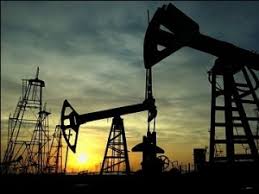What is the perfect price for oil?

Is there a perfect price for oil?
When it’s too high, consumers start freaking out and using less. When it’s too low, oil companies cut back operations and lay off thousands of workers.
Opinions on where the sweet spot currently lies differ widely, but analysts and strategists say it’s probably somewhere between $ 60 and $ 70 per barrel.
“If you are asking what price is high enough to sustain supply and low enough to sustain demand and perpetuate today’s largely balanced global market, it is probably in the neighborhood of $ 65,” said Sarah Emerson, a leading energy strategist at ESAI Energy.
Emerson added that the “perfect or ideal oil price” would depend on whether you’re a producer, consumer or regulator.
Still, some analysts believe that oil markets can achieve a delicate balance that works for most.
Oil market specialists at EY noted last month that oil markets in the first three months of this year “converged to a sustainable equilibrium.”
During that period, prices moved in the $ 59 to $ 71 range. US crude oil futures traded between $ 59 and $ 67. Global benchmark Brent crude oil stayed between $ 62 and $ 71.
Recently, things have been thrown out of whack. Since early April, US crude prices have surged by about 15% to trade around $ 72 per barrel. Brent prices have shot up 20% to trade around $ 80.
Related: ‘Sell in May and go away’ is bad advice
The recent price rise was driven by President Donald Trump’s decision to reimpose sanctions on Iran, which could slash its oil supply to the world market. The collapse of Venezuela, a major oil producer, has made matters worse.
“Recent political events [have helped drive] crude oil prices towards the higher end of a range that we view as ‘normal’ somewhat quicker than we have been forecasting,” noted UBS analysts this month.
The spike is starting to bite. India, the world’s third largest oil buyer, told Saudi Arabia on Thursday that it is worried about the impact on consumers and its economy, drawing a reassurance from OPEC’s biggest producer that it would “guarantee the stability of the market.”
Saudi Arabia knows it has a delicate balance to strike. Higher prices help finance its government programs (and are good for its plans to privatize its state oil company, Saudi Aramco.) But these higher prices can constrain global economic growth as individuals and companies feel compelled to cut their spending. A slower world economy ultimately leads to lower oil demand, creating a lose-lose situation for the kingdom.
But any move by Saudi Arabia to rein in crude prices would be unwelcome news for many producers with high production costs, including those in Canada. It’s very expensive to extract oil from Canadian oil sands, so these producers require especially high prices to justify production. Some US shale producers also require a high price to make any significant profits.
Related: Venezuela’s once-proud oil industry is collapsing
Environmentalists have yet another view.
“Many strongly believe energy consumption must migrate towards renewable fuels and alternative technology vehicles in order to mitigate climate change and air pollution more generally. That objective is easier to reach with higher oil prices,” said Emerson from ESAI Energy.
Ultimately, a fair price is “in the eye of the beholder,” said Harry Tchilinguirian, head of commodity markets strategy at BNP Paribas.
“Achieving a price that both incentivizes [oil] investment without having adverse effects on consumption and economic growth is not easy to achieve and may not necessarily follow an orderly process,” he told CNNMoney.

